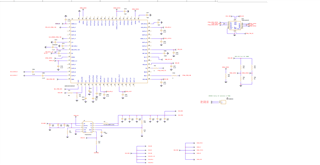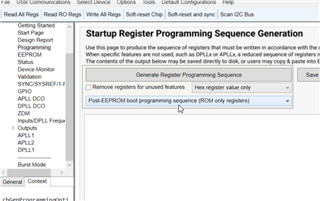Other Parts Discussed in Thread: LMK5C33216, LMK5C33216EVM, , USB2ANY, LMK00804B-Q1
Tool/software:
Hello,
I have integrated in my board a LMK5C33216ARGCR for synchronisation. I am testing the integration.
Once validated, I will put my configuration tested with EVK with TIcs pro software in the LMK5C33216ARGCR EEPROM of my design.
1) I set my design (by an FPGA) once powered
- GPIO0, GPIO2 to 3V3,
- GPIO 1 to 0V
- PD pin to 1V8
- VDD LMK power = 3,27V by using TPS62913RPUR.
2) I am using LMK5C33216 EVK for I2C communication.
I remove the jumpers (I2C/SPI INTERFACE) and I connect SCL/SDA (U2AGPIO0, U2AGPIO1JP5A) from LMK5C33216EVM to my design by with a wire.
I open TIcs pro software and I try to read registers.
I have " Begin reading back read only registers, Communication error Abording and read only registers Confirm Power is applied to device limited and PD# is High"
On my design, I cannot communicate by I2C with LMK5C33216ARGCR.
Questions :
Do you have an idee of the problem?
How can I debug?
What is the expective consumption of LMK5C33216ARGCR in a new design with PD # active or Not and power with 3V3?
I have attached LMK5C33216A part schematic.
Thank you,
Regards,
Patrice



